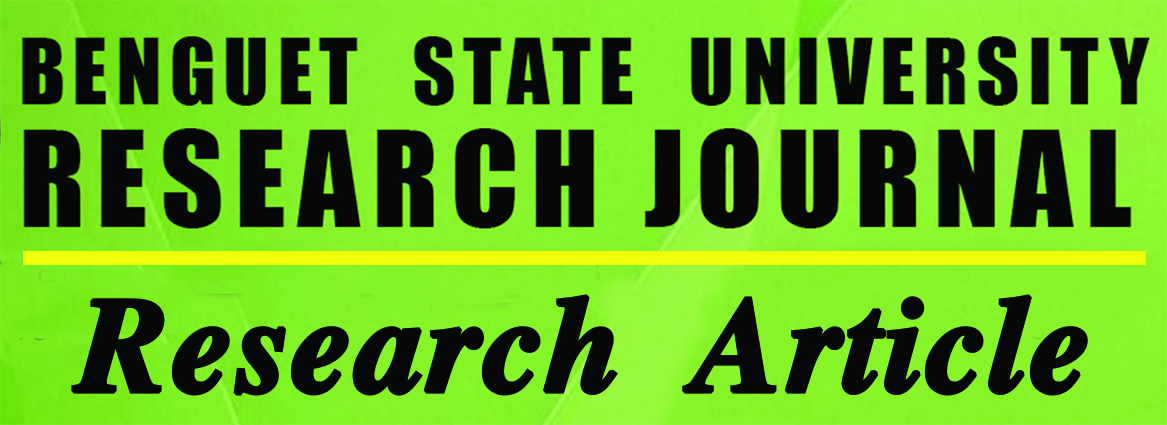Species Profile and Associated Indigenous Knowledge of Trees and Shrubs Used as Tea in Benguet
Main Article Content
Abstract
To conserve indigenous shrubs and trees used as tea for environmental and socio-economic development, profiling of these species was conducted. The research focused in identifying and in obtaining initial information as to the nature of the habitat, flowering/fruiting periods, and respondents’ indigenous knowledge of the shrubs and trees used as tea.
Data were gathered through interviews with community folks using structured questionnaire, augmented by field observations. There were 79 respondents who contributed information; almost all are farmers and the great majority are elders and women.
Eighteen indigenous trees/shrubs were identified by the respondents being used as tea. The most popular being known to more than one third of the respondents is ‘Beltik’ (Syzygium sub-caudatum), followed by ‘Dael’ (Cipadessa baccifera), and ‘Amututin’ (Drimys/Tasmannia piperata).
Among these species, only ‘Beltik’, ‘Talugtug’ (Gaultheria leucocarpa), and ‘Tsa-ang gubat’ (Carmona retusa) are used as tea; the rest are chiefly used as medicinal plants but being prepared as tea.
Mostly used are the leaves, followed by the bark, rarely both the leaves and the bark or the fruits/ seeds. These parts are used fresh, air-dried, or sun-dried, and prepared mainly by boiling. All species were reported to provide health benefits. As cited by the respondents, propagation of the species is mainly through the use of wildlings, seeds, cuttings, and flowering/fruiting usually varies with locations.
The species are found in mossy forest, except ‘Bangkoro’ (Morinda citrifolia L.), ‘Dita’ (Alstonia scholaris), ‘Tuai’ (Bischofia javanica), ‘Narra’ (Pterocarpus indicus) and ‘Tsa-ang gubat’ which are found in lower elevations.

